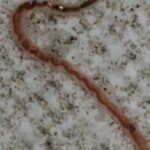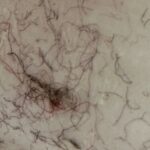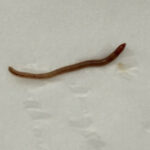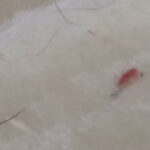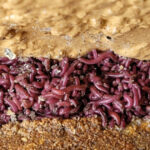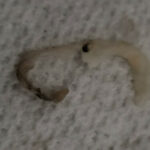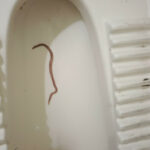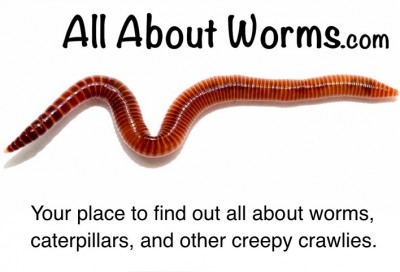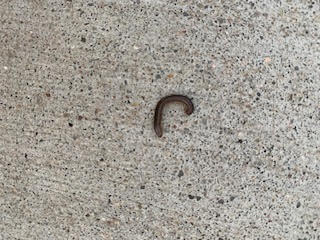
“What are these things?” asks this reader in his submission regarding the pink, translucent worm pictured below. “I live in Phoenix, AZ and these came out after very heavy rain. They washed up in the flooded water onto my patio. I have attached photos. Transparent and small, I photographed them with a toothpick for size reference. Thank you in advance.” To start with, we want to thank our reader for the excellent photo. We can see in such detail the minute physical characteristics, such as entrails visible through the worm’s clear skin, which is really helpful. Likewise, the context he provided is also super helpful. Both of these things together have led us to identify this worm as a tubificid worm.
Tubificid worms go by many names: tubifex worms, sewage worms, sludge worms, and bloodworms. The reasons are varied and equally justified. People call them sewage worms and sludge worms due to their preferred habitat and diet. Like many other worms, tubificid worms are detritivores, meaning they feed on dead or dying organic materials. Tubificid worms can often be found in sewage systems where they have access to bountiful decomposing organic matter. Their natural habitat, before humans came and started pumping their waste into vast underground systems, were lakes and other bodies of water, where they fed on organic debris at the sediment level. In any case, it makes sense that our reader found these after heavy rain and flooding, as this would have brought the worms out of the sewers and into the streets.
These worms are also called bloodworms due to their coloration. Tubificid worms like this one can often appear pink, but they can also be red. While the word ‘bloodworm’ sounds rather sinister, the explanation is not as macabre as one might fear. The term ‘bloodworm’ refers to many species of worms that are characterised by this red color, and which is brought on by an excess production of a hemoglobin-like protein (hemoglobin being the protein in our red blood cells that carries oxygen to our organs and which gives our blood its red color). This allows bloodworms, like the tubificid worm, to survive in low-oxygen conditions, like underwater. Tubificid worms are not dangerous to humans or pets, so our reader needs not worry about that. We suggest he just leaves them alone, or that he washes them back down a sewer grate if possible.
In conclusion, the pink worm our reader found is a tubificid worm. These bloodworms just wanna eat rotting organic matter, so we suggest letting them do just that. We hope this helps, and we wish our reader the very best!
All About Worms is always free, always reader-supported. Your tips via CashApp, Venmo, or Paypal are appreciated! Receipts will come from ISIPP Publishing.
You might also find these guys interesting!





